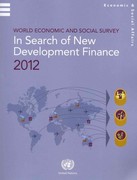Question
1.Kenji is a skilled toymaker who is able to produce both boats and kites. He has 8 hours a day to produce toys. The following
1.Kenji is a skilled toymaker who is able to produce both boats and kites. He has 8 hours a day to produce toys. The following table shows the daily output resulting from various possible combinations of his time.
| Choice | Hours Producing | Produced | ||
|---|---|---|---|---|
| (Boats) | (Kites) | (Boats) | (Kites) | |
| A | 8 | 0 | 4 | 0 |
| B | 6 | 2 | 3 | 10 |
| C | 4 | 4 | 2 | 16 |
| D | 2 | 6 | 1 | 19 |
| E | 0 | 8 | 0 | 20 |
Plot the graph
Suppose Kenji is currently using combination D, producing one boat per day. His opportunity cost of producing a second boat per day is
Now, suppose Kenji is currently using combination C, producing two boats per day. His opportunity cost of producing a third boat per day is
From the previous analysis, you can determine that as Kenji increases his production of boats, his opportunity cost of producing one more boat
Suppose Kenji buys a new tool that allows him to produce twice as many boats per hour as before but doesn't affect his ability to produce kites, used X to plot his new PPC on the previous graph
Because he can now make more boats per hour, Kenji's opportunity cost of producing kites is..........it was previously
2. Suppose South Africa produces only two goods: alfalfa and DVDs. The following graph shows South Africa's current production possibilities curve, along with six output combinations represented by black points (plus symbols) labelled A to F.



Step by Step Solution
There are 3 Steps involved in it
Step: 1

Get Instant Access to Expert-Tailored Solutions
See step-by-step solutions with expert insights and AI powered tools for academic success
Step: 2

Step: 3

Ace Your Homework with AI
Get the answers you need in no time with our AI-driven, step-by-step assistance
Get Started


